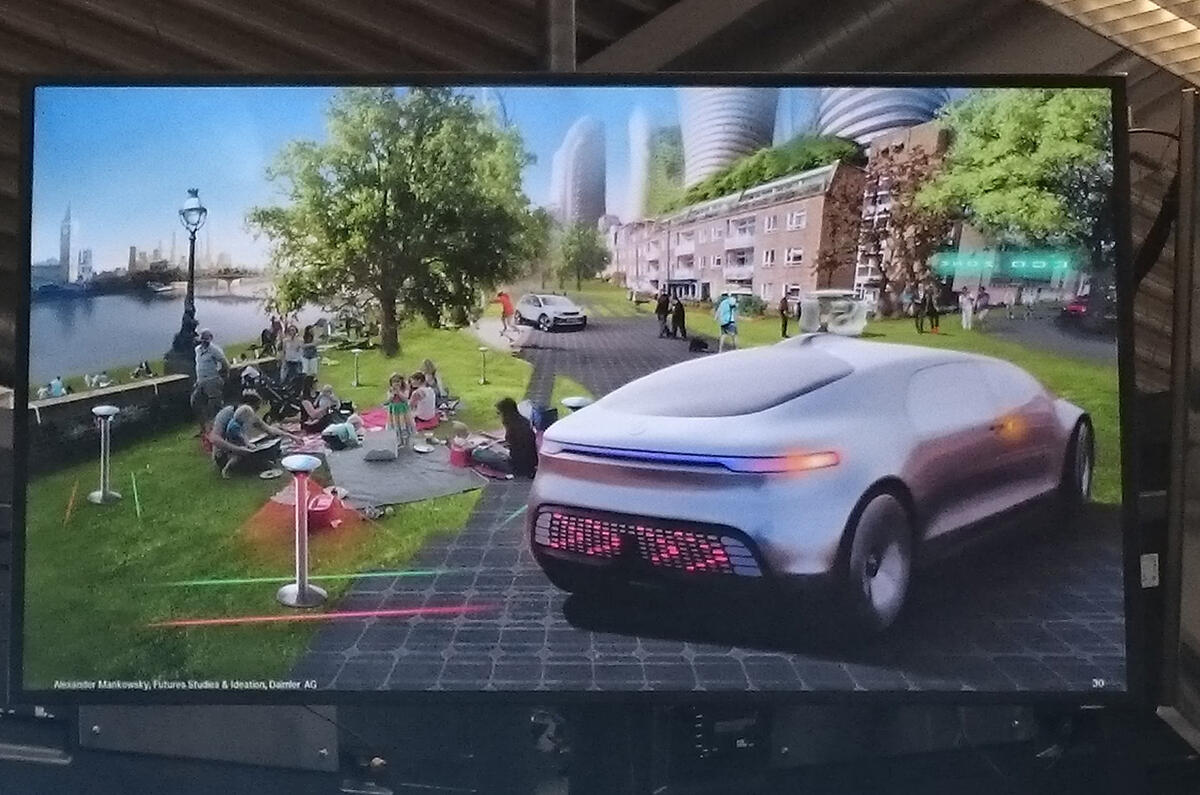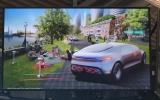A couple of months ago I found myself in Linz, Austria, with Mercedes-Benz. The company was demonstrating its F015 autonomous super-luxury car. The event at which Mercedes was displaying its futuristic concept was an unusual one for a car company to attend.
Part of a bigger series of events during last year, it was a kind of rolling think tank on how the cities of the future should be designed and how the city resident of the future should be living. In Linz, many of the exhibits were concerned with the kind of back-to-basics living that became popular in the 1970s.
A few weeks later I was with Audi in Barcelona, and part of that trip was to another big exhibition concerning the cities of the future. This event, though, was far more about the potential of connectivity and new technology, where everything in the city can communicate with everything else: car parks talking to cars, waste bins talking to the local council.
Interestingly, the UK government had taken a large stand to showcase some of the UK’s big data companies and what they could do.
The possibilities already being investigated are amazing. Ordnance Survey was showing a database that could predict the outcome of severe weather, such as flooding, and which residents of a town would need to be evacuated first. I took it to be some kind of merge of a flooding database with an NHS database.
There’s clearly a global trend towards reinventing the city. Indeed, there are moves to build new cities from scratch, including a 30-year project in north-west London around Willesden and Wormwood Scrubs which has already been dubbed ‘Royal Oaks’.
The trouble for the world’s car makers is that their products might well be ‘designed out’ of such city districts of the future.
The widely held theory is that, by 2030 or so, 70% of the world’s population will be living in cities. Walking, using the bus and cycling will become the norm if you can live close to where you work. Add that to the rise of virtually on-demand taxis in the form of Uber (already a big hit with today’s uni students) and cars become increasingly redundant.
Of course, car makers can’t take these predictions lying down, so they are moving to make the car of the future more compatible with the city of the future.
While at Linz, I managed to snatch a camera phone shot of one of Mercedes’ images of these city-friendly cars of the future. It shows something close to the F015 in a ‘greened’ city (note the grass, trees and narrowed roads) which I immediately recognised as Vauxhall, on the south bank of the Thames in London.
By a remarkable coincidence, Vauxhall Cross is just about to undergo this very kind of ‘greening’. It’s currently a massive super-gyratory (it was originally a six-lane-wide mini motorway) of the type loved by the 1960s planners.
Artists' impressions show how ‘city of the future’ influences are already emerging in the UK. Road space has been reduced, pavements widened, more greenery introduced and cycling made easier. Even the oddball bus station installed at Vauxhall a decade ago is being demolished for something much less obtrusive.
The same thing is happening a few miles away in Wandsworth, in south-west London. If you’ve ever driven into the capital on the A3, the Wandsworth gyratory is that final few minutes of purgatory before you get into the centre of the capital.
Out goes the gyratory, for Wandsworth’s high street to be converted into somewhere with, yes, wider pavements and more trees, and only the occasional slow-moving bus to bother the pedestrians.
A much bigger project at Elephant and Castle - perhaps the most crackpot example of modernist planning - in south east London is also trying to eliminate a double gyratory, and turn a concrete nightmare into something healthier.
Personally, I’m absolutely not against the calming of these 1960s monstrosities. I’ve been a keen proponent of shared space and more civilised areas for sitting and watching the world go by for a long time.
However, the greening of bits of existing London can only manage so much. Imagine what could happen if redevelopment were more fundamental. The pressure to outlaw vehicles altogether would be huge. In a couple of decades, the average city dweller might regard owning a car as amusingly dated as writing letters.
This is also why ‘dieselgate’ has been such a disaster for the wider vehicle industry. Alongside making areas of a city more civil and peaceful, air quality is now high on the agenda. Real-world testing will surely establish that diesel engines are more polluting in stop-start conditions, and the pressure on the use of vehicles in cities will become ever greater.
If you think that’s an exaggeration, Wandsworth Council has just ruled that, from January 2016, delivery vehicles will be banned from stopping between 7am and 7pm on - highly polluted - Putney High Street. It can only be the beginning of a much wider trend.
And As I write this, the government has announced ‘clean air zones’ for Birmingham, Leeds, Nottingham, Derby and Southampton in 2020, which will seek to push older diesel commercial vehicles and taxis off the road.
I can’t blame car makers - and Audi boss Rupert Stadler has been particularly forthcoming - for being so worried about the future. As car parking spaces become rarer and road space continues to be reallocated away from traffic, selling cars in the great population centres will become increasingly difficult.
That’s why automatic city braking, autonomous control, pedestrian detection and some degree of zero-emissions running are all becoming vital to the cars of the near future. As cities become green themselves, cars will have to become much lighter footed.











Join the debate
Add your comment
lol, the vege stall Mercs are
Yes, but